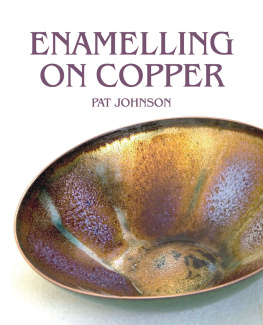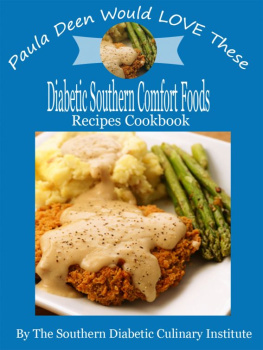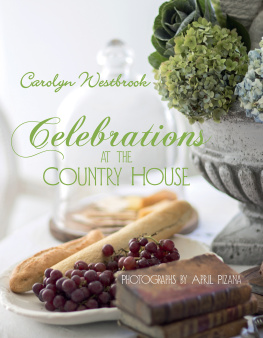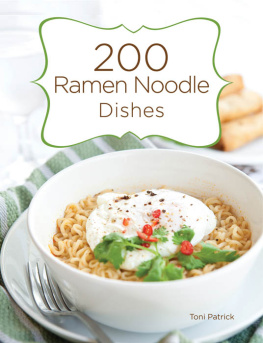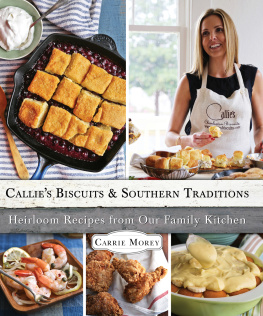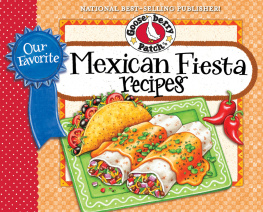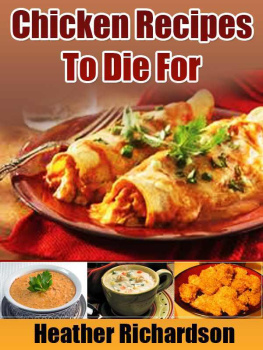Contents
Guide
Page List
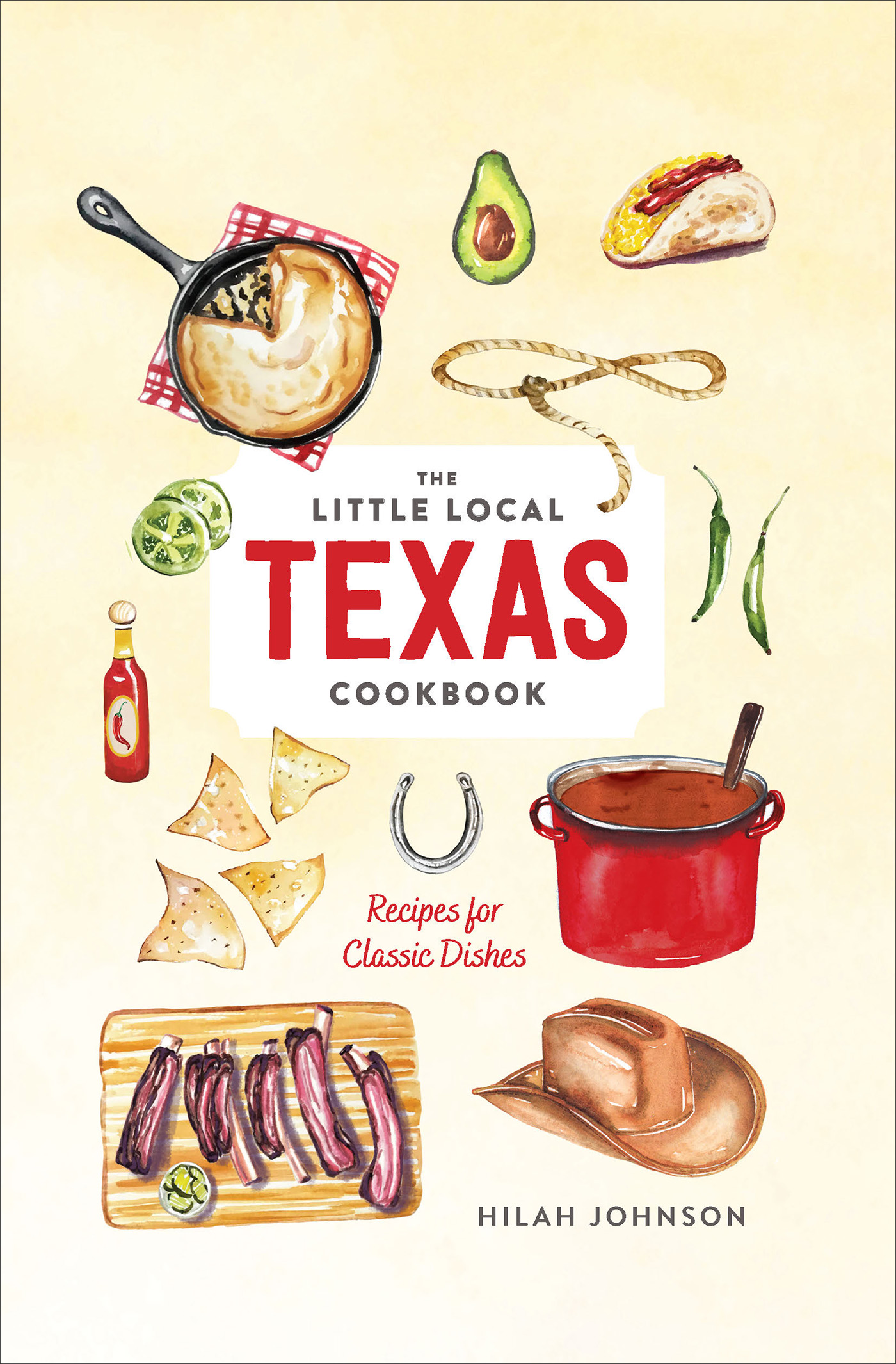



THE
LITTLE LOCAL
TEXAS
COOKBOOK

Recipes for Classic Dishes
HILAH JOHNSON

Copyright 2019 by Connected Dots Media
Illustrations by Courtney Jentzen
All rights reserved
For information about permission to reproduce selections from this book, write to Permissions, The Countryman Press, 500 Fifth Avenue, New York, NY 10110
For information about special discounts for bulk purchases, please contact W. W. Norton Special Sales at specialsales@wwnorton.com or 800-233-4830
Book design by Debbie Berne
Production manager: Devon Zahn
The Library of Congress has cataloged the printed edition as follows:
Names: Johnson, Hilah, author.
Title: The little local Texas cookbook / Hilah Johnson.
Description: New York, NY : W. W. Norton & Company, Inc., [2019] | Includes index.
Identifiers: LCCN 2019006203 | ISBN 9781682684191 (hardcover)
Subjects: LCSH: CookingTexas. | Cooking, American. | LCGFT: Cookbooks.
Classification: LCC TX714 .J622 2019 | DDC 641.59764dc23
LC record available at https://lccn.loc.gov/2019006203
The Countryman Press
www.countrymanpress.com
A division of W. W. Norton & Company, Inc.
500 Fifth Avenue, New York, NY 10110
www.wwnorton.com
978-1-68268-419-1
978-1-68268-420-7 (ebook)
For Flint

CONTENTS


Three-meat barbecue plates with unlimited pickles, onions, and soft white bread. Cheese enchilada platters. Crisp, breaded, chicken-fried steaks, ladled with white cream gravy. Backyard fish fries and community chili cook-offs. Chips and queso. Crunchy beef tacos. Pillowy soft kolaches. Pecan pie. These are some of the finest foods Texas has to offer.
While many classics, including chili, chicken-fried steak, and queso, are found the whole state over, other famous Texas dishes are regional. Dry-rubbed barbecue brisket is still mostly found in central Texas, and breakfast tacos arent seen much north of Dallas. Kolache bakeries nestle inside the Texas Triangle, formed by connecting the dots of Dallas, Houston, and San Antonio. The freshest fried fish can be found at shacks in east Texas and down the Gulf Coast. The Rio Grande Valleys got the best flour tortillas youll ever eat in your life. Depending on the region, wild foods such as Mustang grapes, chile pequin peppers, and prickly pear cactus, are still featured in home kitchens.
Texas cuisine has been influenced by Mexican and African-American cuisines, giving rise respectively to two of our most famous exports: Tex-Mex and barbecue. Its also been influenced by Native American, Cajun, Creole, British, Irish, German, Czech, Chinese, Vietnamese, Italian, Jewish, and Dutch cuisines, among many others. The Spanish conquistadors brought rice and pigs. Native Americans shared the science of nixtamalizationthe process of turning corn into hominy and then into masa and tortillas.
Tex-Mex developed out of northern Mexican cuisine, incorporating ingredients such as fresh, dried, and pickled chiles; tortillas; and beans; and adding more dairy, beef, wheat, and cumin. recipes in this book are quintessential Tex-Mexand can all contribute to the wondrous concept of the combo plate. A Tex-Mex combo plate usually includes an enchilada, a crispy taco, and more rice and beans than you probably can eat.

Brought to Texas by African Americans, barbecue is a vastly important part of the states history and culture; producing good barbecue in your own backyard is a badge of honor. Beef brisket and ribs are what most people think of as Texas-style barbecue, but while beef barbecue is popular now, it wasnt until after the Civil War and the cattle drives that followed that Texas became synonymous with beef. Before that, pork was the most commonly eaten meat in the state. Sauced and chopped, East-Texas-style barbecue pork, a descendent of Carolina-style barbecue, is considered by many historians to be the true original Texas barbecue.
. Within a generation, bakers were stuffing cheese and sausage inside them instead. Of course, like everywhere, theres a continuous push-pull of cultures in the kitchen, but it does seem like more dairy, more beef is a constant you can always count on in Texas.
In this book, youll find all these recipes and more, along with their deeper histories, because somewhere between its food and history lies the heart of a place.
Welcome to Texas.
Makes 12 servings
Chips and queso are the quintessential Texas appetizer, because nothing says Tex-Mex like buckets of dairy products and cheese. The queen of cheese has got to be Velveeta, and its the only cheese thatll do when its time to make queso. (Word to the wise: refrigerate leftover queso and use it as a sandwich spread, or add it to some scrambled eggs to make the best breakfast tacos ever. It will keep for a week or more in the refrigerator.)
1 large onion, finely diced
2 tablespoons bacon fat, butter, or margarine
2 10-ounce cans diced tomatoes with green chiles (look for Ro-Tel brand)
1 2-pound block Velveeta cheese, sliced into 1-inch chunks
Diced avocado, chopped cilantro, and sliced green onions for topping, optional
Tortilla chips for serving
In a large skillet over medium-high heat, saut the onion in the bacon fat until soft and translucent, about 5 minutes. Stir in the tomatoes with chiles and their juices and then the cheese. Reduce the heat to low and cook, stirring frequently, until smooth and melted, about 8 minutes. Gently fold in the toppings, if using. Serve right away with the tortilla chips.

Note : If serving for a party, its easiest to transfer queso to a slow cooker on low heat for holding. If your slow cooker doesnt have a removable insert, save yourself a lot of trouble and put your queso in a glass or metal bowl that fits inside the cooker and can rest on the lip. Fill the slow cooker halfway with water and use it as a double boiler.
Note : For an even simpler version, omit the onion and bacon fat. Combine cubed Velveeta with canned tomatoes and peppers in a microwave-safe bowl and microwave on high, stirring every 90 seconds, until melted and smooth, about 5 minutes.







